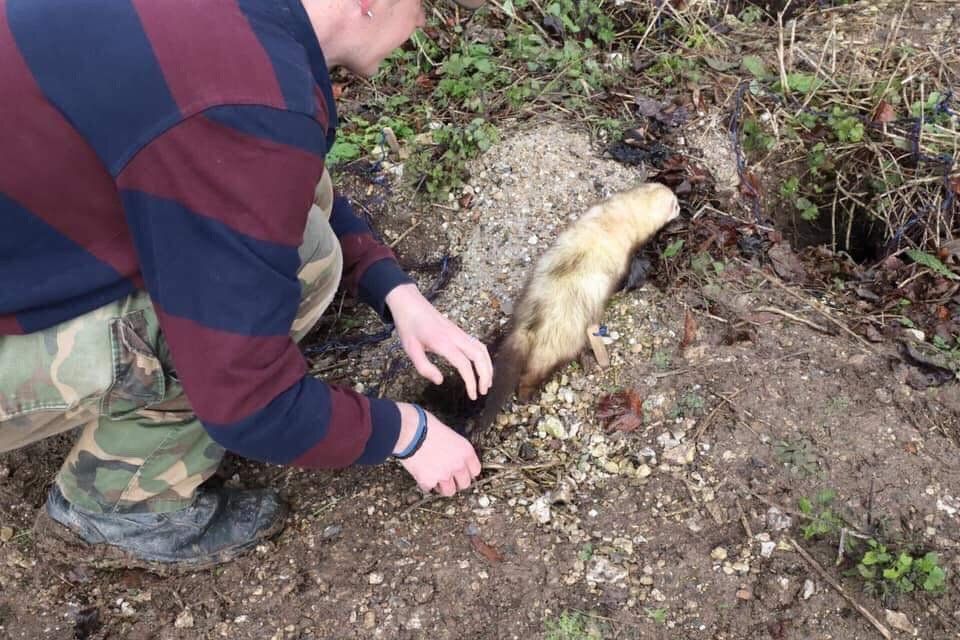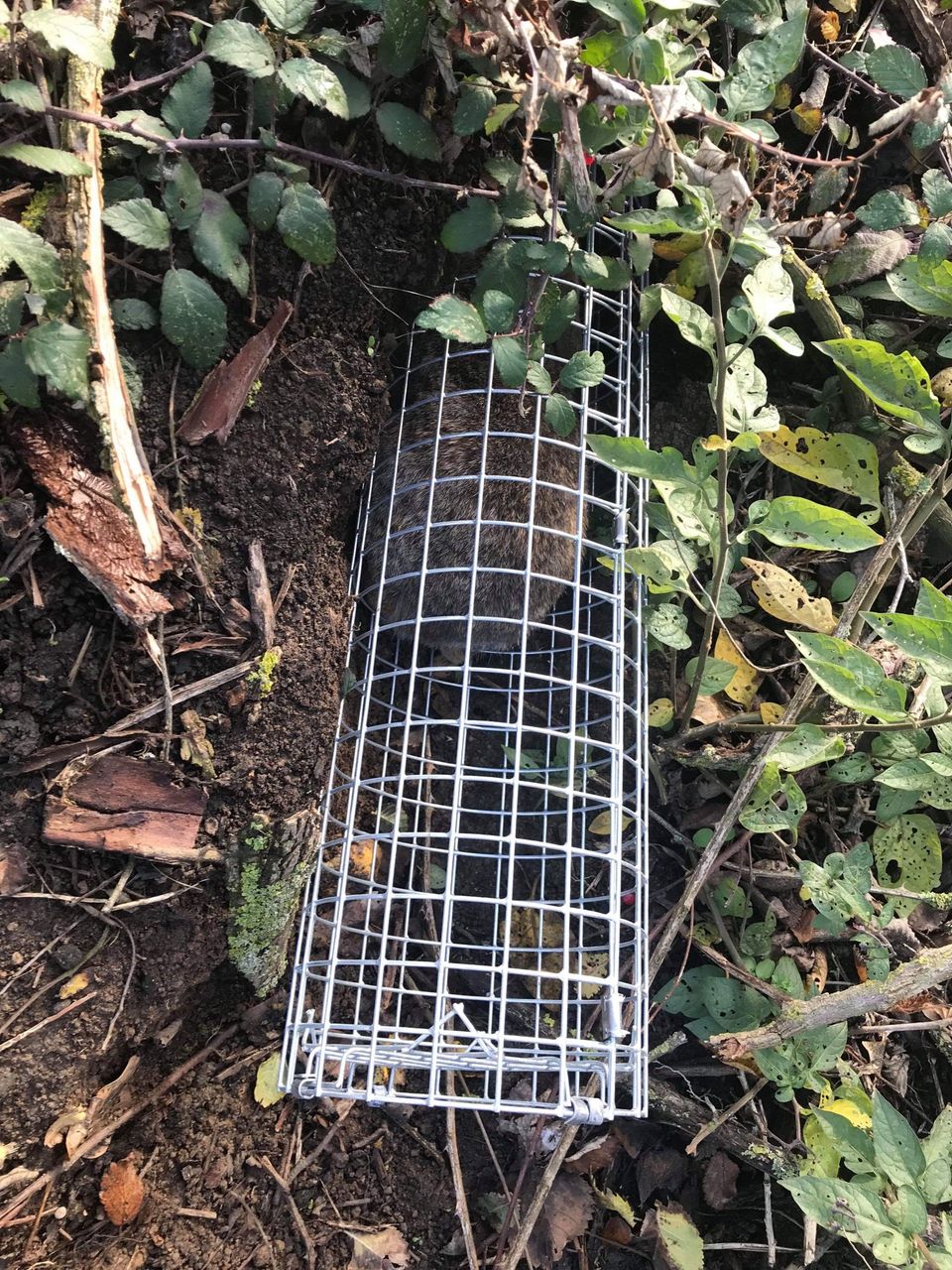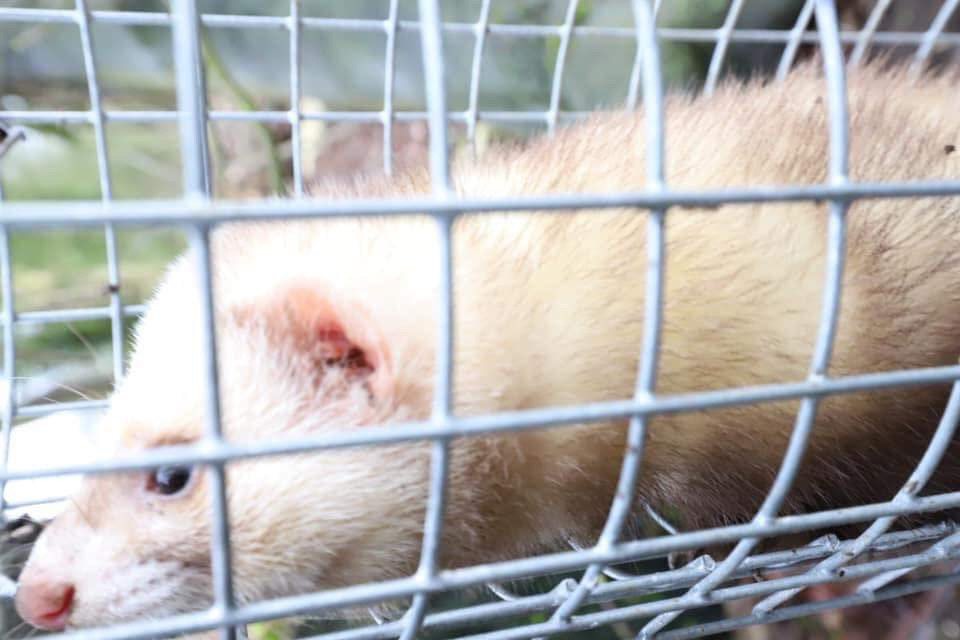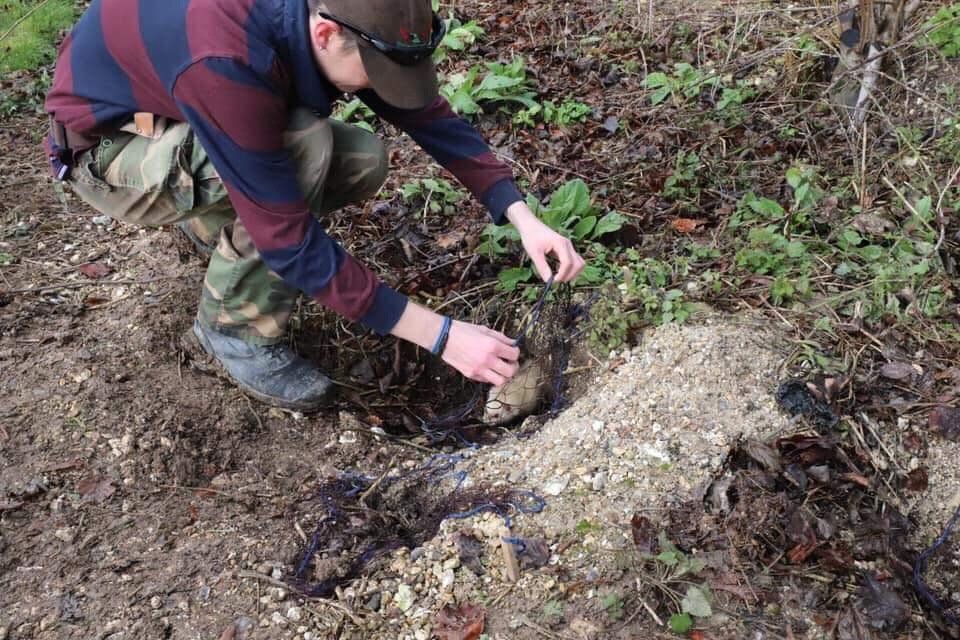Ferreting season 2019
The 2018-2019 ferreting season and how it went
“Ferreting season” is known as a time of the year when rabbits are not producing young due to the temperature (this is generally mid to late autumn through to early spring). The rabbits are bolted (chased out) of their warren by a predator (the ferret) and into nets or special cages called bolt traps and then humanely dispatched.
Why only ferret in this “season”?
Legally, there are no hard and fast rules surrounding the ferreting season; however, there are some things to consider. At any other time of the year, rabbits will usually have babies, this can cause a number of issues when ferreting because, as a predator, the ferret will always take the easy option. This means chasing off all the parent rabbits (the doe-female and the buck-male) – sometimes from the same warren – with the young becoming a three-course meal. This, in turn, would cause us to be digging out a ferret every time it found a nest.
As natural as this method of control is, morally we don’t want any animal to suffer. Adult rabbits can escape a ferret which is why we catch them in nets for instant dispatch. Out of season, however, the young of any age could be underground and since we can’t see them they are likely to succumb to the predator's natural instincts. When the ferret has had its fill, it is likely to curl up and sleep off the feast. We don’t want to be ruining our client's property (the lawn mainly) to dig out a ferret that may be as much as 11 feet underground!
So, what’s happened this season?
The season began with us using the services of other ferreters that we have worked with for a few years. During this time worked a couple of areas including a farm that hadn’t had rabbit control for some time. All the signs were there: fresh diggings; fresh footprints; and even droppings that should have still been steaming. However, the results were poor and we were only getting up to 10 rabbits each session. It goes without saying that we cannot remove rabbits that are not there. The numbers can fluctuate rapidly within a warren or across others in that area. It can be difficult at times, to say the least, and the only way to control the numbers is regular visits for rabbit control; using multiple different methods and deploying the ferrets in the winter to put a large dent in the population.
Biscuit, Weasel, Slinky and Nipper
Around a month ago we acquired our own ferrets from 2018 litters, in fact, we acquired four hob ferrets (a hob is a male ferret that hasn’t had a vasectomy). And Biscuit, Weasel, Slinky and Nipper? That’s their names.
Our ferrets have had a couple of sessions in the field – both under the supervision of other local pest control technicians. I will remember their most recent outing fondly as the first wasn’t much good at all. I took Nipper and Weasel for this successful trip.
We set the nets and bolt traps over what looked like a main warren, all the signs where there, fresh droppings and little diggings looking like it was down two minutes before arrival. Nipper went down and came straight back up. We tried him in every hole; he was very keen, yet nothing showed so we moved to the second warren.
We placed the nets over the entrances once again, and a single cage. The cage was due to the layout between fallen tree roots not allowing the bolt traps to be set correctly.
Two minutes in and we saw him pass by a couple of the entrance holes but not come out. Then I felt a couple of bumps under my feet – maybe six inches under my heel if I had to take a guess. And silence once again. A few seconds later some fur showed between two roots behind the nets. It was a rabbit. “Quick grab it,” I thought so I went in to remove it for humane dispatching. Trouble was that Nipper still holding it by its tail, so I had to bring him out as well. One rabbit down, ferret back in the warren and still looking eager. Another few minutes pass without any sign of the ferret. If there is nothing home the ferret tends to pop out of various holes quite regularly.
Still no sign, it’s looking good though the ferret must be chasing one. The next moment, there’s a rattle of metal and a rabbit enters the bolt trap. “Fantastic” I thought as the bolt traps are removed and the ferret pops out a few moments later. At this point, Nipper had worked well so I let Weasel take over. Weasel worked the warren popping up from every hole whilst sniffing the rabbits out. Unfortunately, he did not manage to bolt any. This was also a good sign as Nipper must have already emptied the place. Even so it gave Weasel a good stretch.
We have one more trip planned before we deem ferreting season over and move to other methods of control.
In conclusion thank you to the ferreters who come in under our name. Even though we now have our own ferrets, this will not cease. Nipper has been a fantastic worker from the results when using him so far, with Slinky and Weasel close behind. Biscuit will be getting his first chance in our final session. We are working with our ferrets to tame them and this will continue throughout the year until next season.
Beyond the ferret
Ferrets WILL clear out all the rabbits from a warren, however stopping them gaining access to your property is a major part of solving the problem and even then it is not guaranteed. You may have heard the phrase “rabbit-proof fencing” but the term is a misconception. It can play a vital role in reducing the number of rabbits on your property by creating a barrier, in a low-pressure area (ie not many rabbits). In high pressure areas (high rabbit count) it will work better in conjunction with a drop box trap or another method. An unset drop box trap allows rabbits into the property for a short period to gain their trust, after which it can be set. Once set, any rabbit entering the property via the trap entrance is caught in a catch box for humane dispatch the next day.
At Shire Pest Solutions we care for the animals we have to control. We have no tolerance for inhumane traps and will only use the best. If you have the pest, we have the solutions.
Regards from me and the Shire Pest team and a big thank you to John Sage for the pictures and land to ferret, see you next time.
All Rights Reserved Shire Pest Solutions





